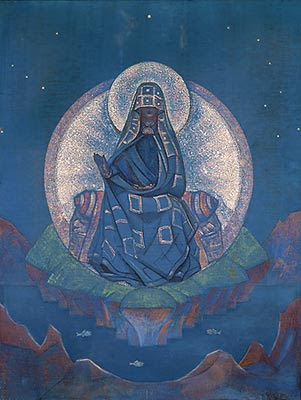A friend emailed me an image of this statue of the Virgin Mary and Child Jesus. It appears to be from a Latin country (Italy?) and is unusual in that it depicts the Queen of Heaven wielding a cudgel or stick to strike a devil, prone beneath Her right foot. I have never before seen the Madonna portrayed in this martial aspect.
It is remarkably similar to Hindu depictions of the Mother Goddess, Shri Durga, battling with the demon Mahishasura. She holds underfoot the buffalo form Mahisha took, and She prepares to strike his true form as it emerges from the wounded animal.
Where an archetype is important in the human collective psyche, it will reappear, even where it has been suppressed, or within religious traditions that seem unsympathetic to it.
If anyone knows any more information about this statue, please add a comment.


